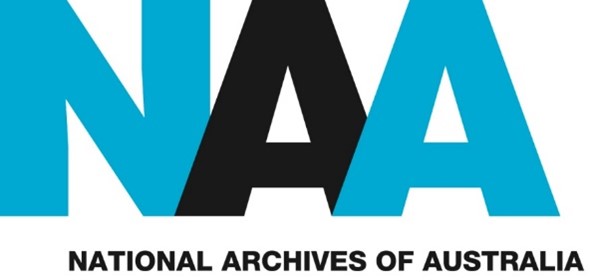In this conference, historians and experts on the era presented on both the strategic and the tactical.

They explained how and why the Imperial strategies evolved and in turn affected colonial thinking in the day, both land and maritime. The internal security battle at Eureka and the development of Governor La Trobe’s ‘army’ after the colony of Victoria was declared in 1851 was examined along with the involvement of Australian volunteers and armed settlers in the New Zealand wars along with discussion around some of the first mounted troops deployed to South Africa in 1899.
The development of iconic coastal forts was examined – and supported by a National Archives of Australia facsimile display of some of those original plans. Details of a colonial training exercise in Victoria in the late 1880s showed how local leaders and military technology had developed by the late 1880s.
The MHHV conference to explore this fascinating era in Australia’s development was convened by Dr Andrew Kilsby at Waverly RSL. The presentations were exceptional and offered considerable new perspectives on Australia’s early years. 27 delegates gave the 9 eminent speakers their rapt attention over the day.
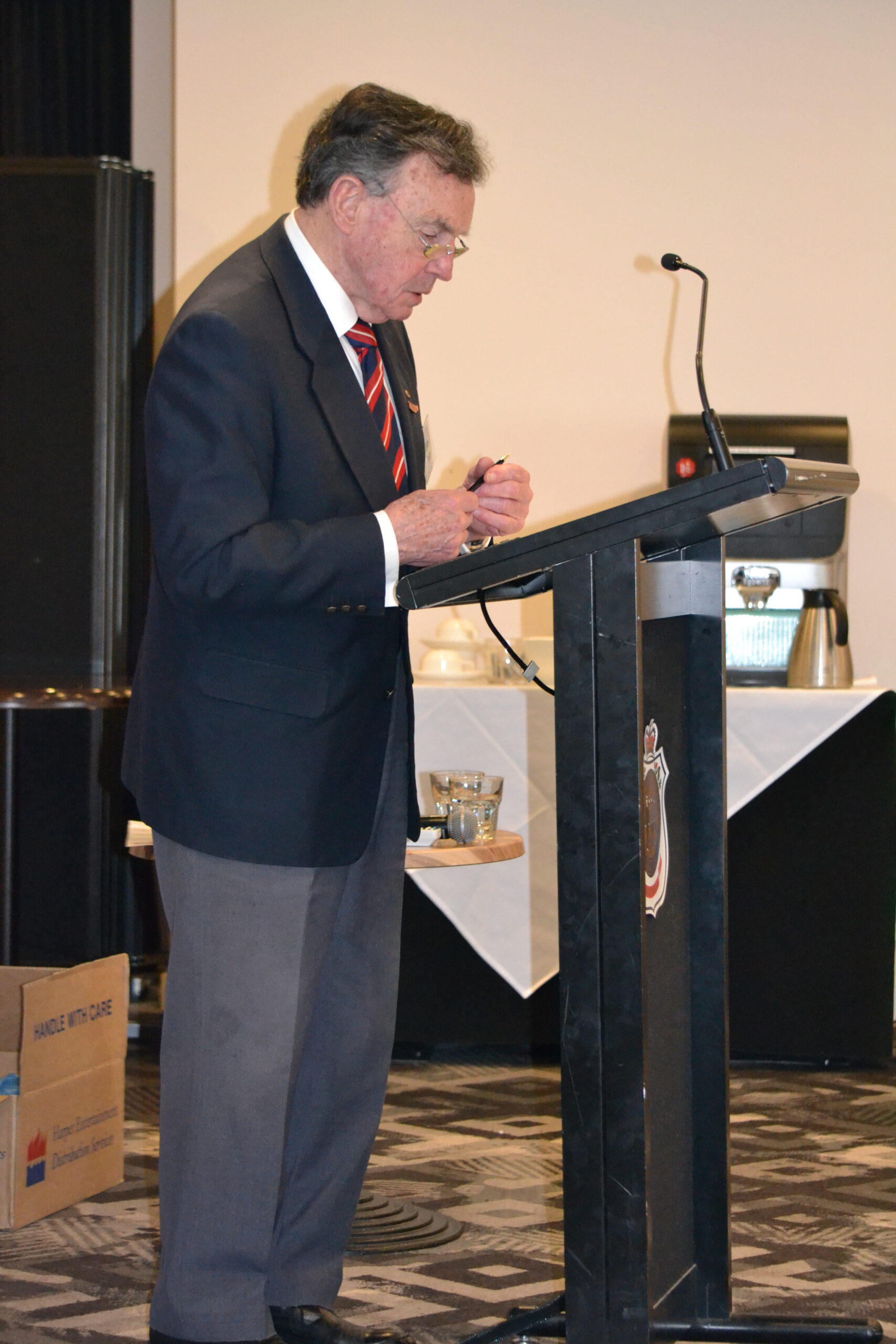
In introducing the conference, Major-General Jim Barry AM MBE RFD ED (Rtd), noted that this was the 17th MHHV conference in 12 years and that he expected this conference to meet the MMHV’s exacting standards. He also thanked the two Red Jackets standing guard at the entrance as well as the sponsors, Big Sky Publishing, Echo Books and the sponsorship of RSL Waverly.

The keynote speaker Dr Craig Wilcox set the scene discussing Maritime Frontier Conflict, and other items from the colonial military history to-do list. In relation to the New Zealand wars he noted that there was an artificiality in thinking of the militaries of Australia and New Zealand as separate. In fact, most of the soldiers for the wars originated from Australia. Many of the soldiers were tempted to fight for the pay especially after the collapse of the gold rush in both countries. They were also promised farming allotments. As with most soldier settlement schemes, few of the farming allotments were successful. As the wars started, the militias found the Maoris well-armed with muskets as the long push by soldiers, sailors, whalers, traders and missionaries to make money had resulted in extensive gun running. This was not an easy war.

Captain Ainsley Morthorpe CSM RAN in his presentation The19th Century imperial maritime experience noted that the prevailing view was that the British would always be a dominant maritime power. That along with the crippling cost of providing a home financed blue water fleet drove most of the local decisions which inevitably led to local under investing.
As time went on, there was an evolving doubt that the British could actually provide defence of Australia in times of war and that Britian’s imperatives would be global compared to Australia’s regional. This view shaped the strategic thinking of Australian Rear Admiral Creswell who championed the view that to reduce risk, Australia needed some blue water maritime capability to be stationed at home. Creswell’s view prevailed and Australian ships were valuable for home and regional defence at the start of both WW1 and WW2.
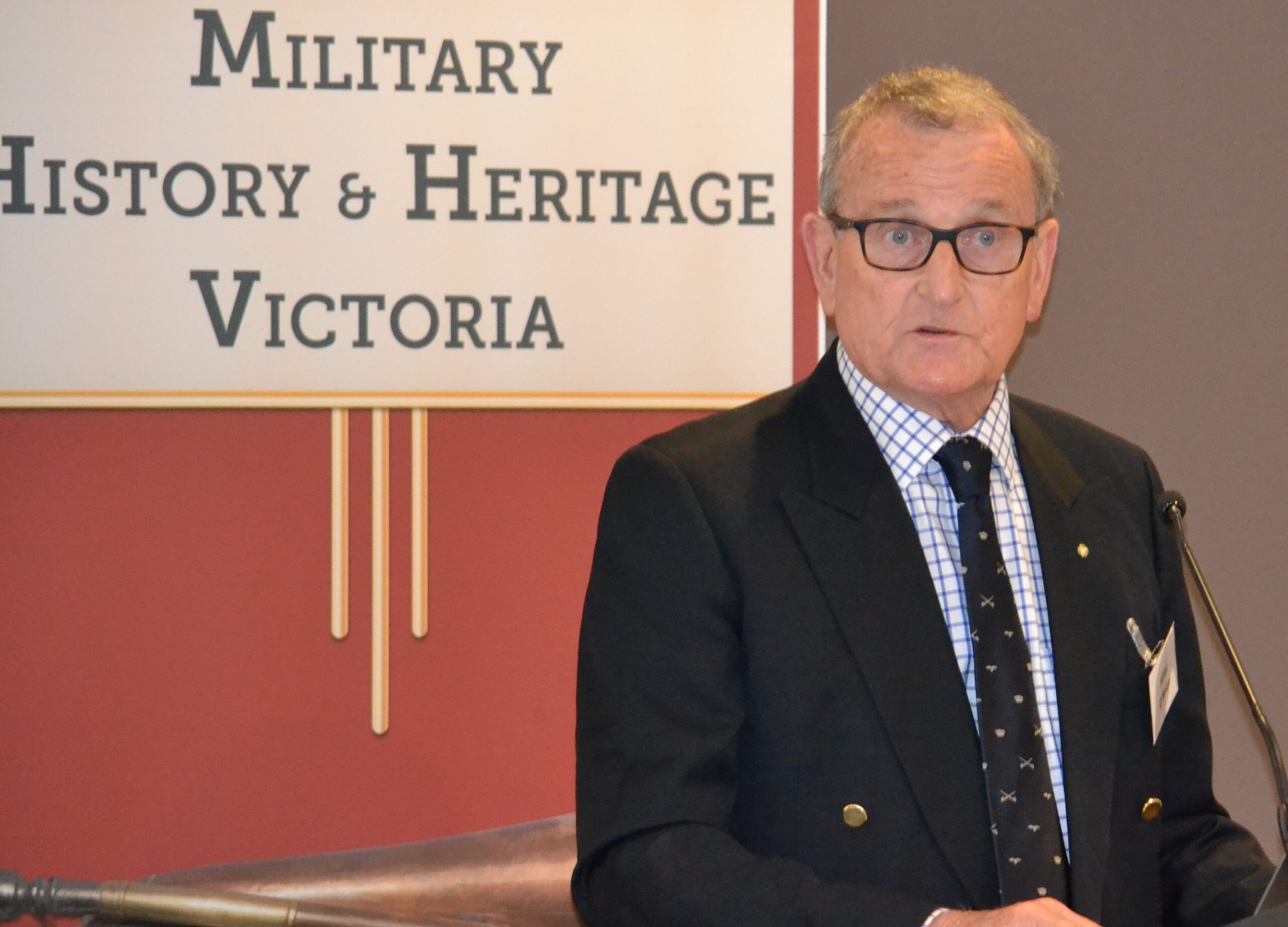
Major-General Mike O’Brien CSC MDA (Rtd) (La Trobe’s Army) began by noting that as governor, Charles La Trobe did not have direct control over the armed forces but could request assistance. The armed forces in the colony consisted largely of regiments from Britain which cycled through with relatively short stays one to two years. The forces looked after themselves and their accommodation was generally sub-standard. There is little record of who was here. Overall their duties were minor. Their chief job was for defence, this being a task that required little actual time. To fill the void, they were actively involved a multitude of other tasks such as keeping law and order, guarding prisons, gold escorts and most visibly in civic shows providing band performance.
The gold rush added to their tasks. From the 1850s Melbourne became their centre of gravity. Melbourne was suddenly awash with wealth measured in billions of present day dollars. The Royal Engineers came to build fortifications. They also laid out the city and other towns, and build Victoria Barracks and Parliament.
Mr Gregory Blake, Historian and Author of The Eureka Stockade 1854 explained the cost and petty, but severely bureaucratic administration of mining licences led to the Rebellion. Initially the protests were peaceful but relations between the authorities and the diggers became increasingly fraught. The military was called in and was attacked by the Diggers. The situation escalated. In advancing to the miners’ defensive stockade, the military didn’t expect opposition but a shot rang out and a trooper died. Naturally this angered the soldiers. They advanced under orders. While they may have been angered but contrary to popular beliefs, they were not ill disciplined. The military suffered 78 killed or wounded while 22 diggers were known to have died. Later deaths from wounds on both sides aren’t know. The battle was a decisive turning point in the development of Australian democracy as it ultimately led to one man one vote.

Author Mr Jeff Hopkins-Weise MPhil (Victoria and the New Zealand Wars of the 1860s: and the Victorians in the Taranaki Military Settlers and the New Zealand Armed Constabulary). From 1845 Australia was the key supplier of military equipment and men for the Frontiers Conflict under the Empire stamp because the effort could be supplied quickly from there.
Through the 1860s the main fight was in the Taranaki of which 550 participants were listed as from Victoria. In these battles at least 50 Australians died and 41 were from Victoria.
Overall some 3,000 diggers were recruited from Australia. Many of those were recruited as military settlers with farm experience obviously for enhancing development of the country. As with most of such schemes, very few of the soldier settlers succeeded as farmers. In any event most actually just wanted a job as the gold fields in Victoria and Otago became exhausted. It would seem that the most effective recruitment occurred in hotels.
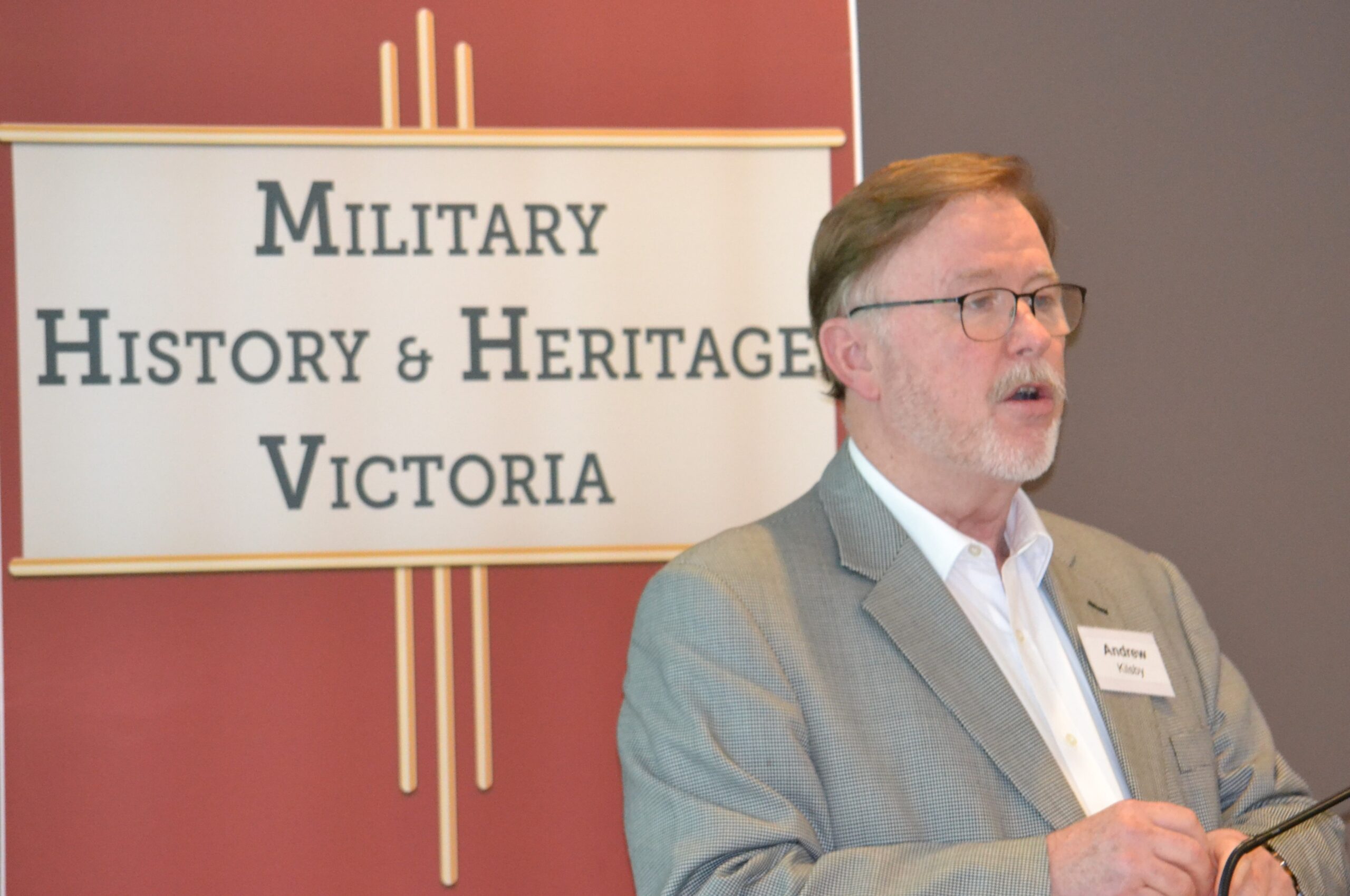
Dr Andrew Kilsby, author and convenor of the conference (The Battle for Oakleigh Station 1888: Nordenfelts, Landmines and ‘Khakee’). The significance of this railway station was its location on the direct route between Western Port, seen as a potential landing site for an invading force, and the City of Melbourne. The militia decided in 1888 to stage an exercise with an attacking side coming from the east and a defending side on the approaches to the station. Given that the land was in use for farming and residences, there was little scope for manoeuvre. Much equipment was tested. The attack faltered on land mines on the approaches to the station. With this result the men were stood down and the officers went to the pub. Dr Kilsby observed that the officers were a cast of worthy citizens and that everyone had two jobs.
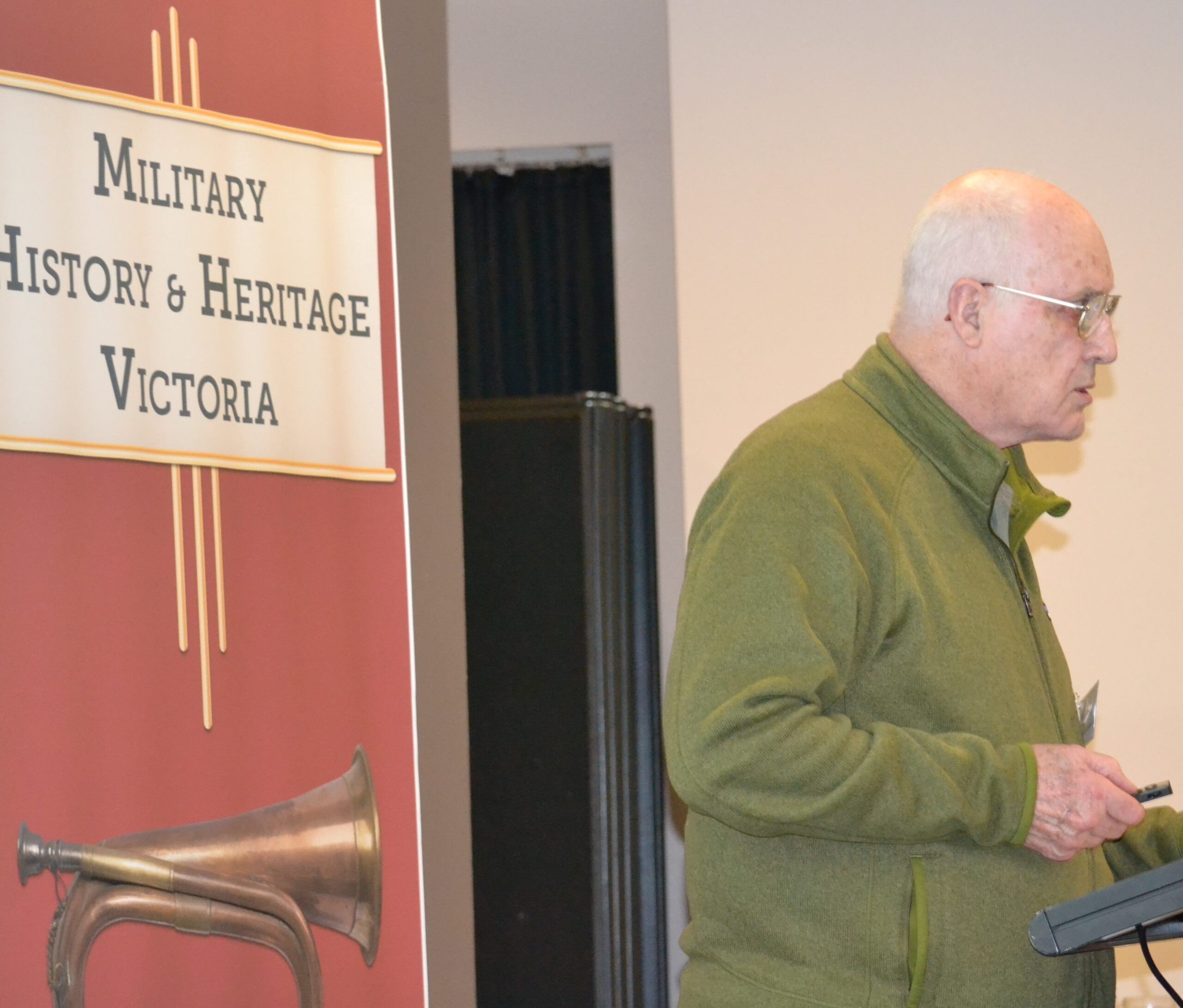
Dr Robin Droogleever (The 1st NSW Mounted Rifles and the Boer War 1899-1901) reported this force was very effective during operations in the Boer War. He noted that there were quite a number of Victorians in the regiment. The first contingent arrived in South Africa in September 1899. When the whole force was in country, they were deployed and acquitted themselves well in a number of actions. They shone through south of Pretoria where they broke through a gap in the enemy’s line. This resulted in surrender of the enemy. Later in June 1900, at the Battle of Diamond Hill, the Boer line was holding until the Mounted Rifles attacked. The Boers turned tail and another victory was achieved. In between times they were ordered to destroy homes that were considered havens for Boers. They disliked this duty but obeyed. Reconnaissance was more to their liking and at this they provided a sterling service. Of the 665 NSWMR in South Africa, only 13 were killed.
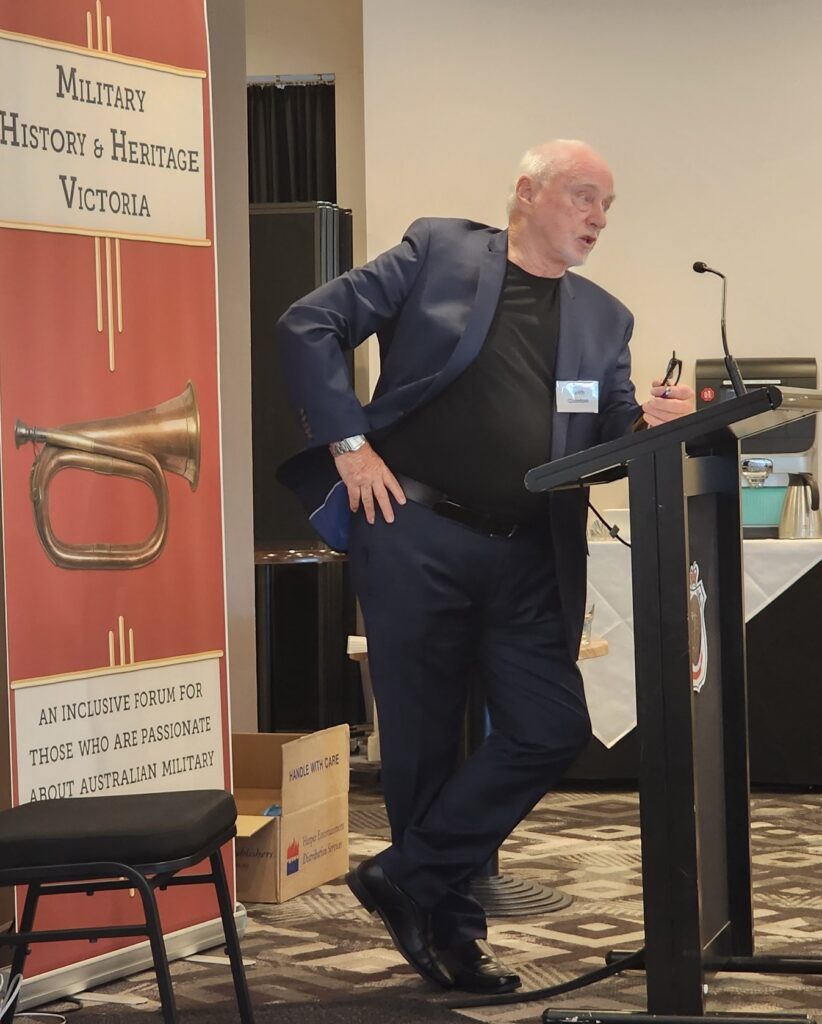
Mr Keith Quinton (John Blackbourn CE – Completing the Heads Fortifications 1885-1895). By the mid-1880s with all the gold being exported from Melbourne and the ongoing scares about Russian attacks it was considered necessary to protect the entrance to Port Phillip Bay. The primary defence was provided by guns mounted at Queenscliff, Point Nepean and several other locations around the entrance to Port Phillip Bay. These emplacements were designed by engineer John Blackbourn (the highly decorative plans for many of these installations were on display at the conference). The guns had overlapping fields of fire and were supported by armed ships within the harbour. Submarine mines were anchored in the two main shipping lanes at depths that ensured they were within 20 ft below passing ships. To prevent destroying friendly vessels, the mines were wired with the intention that they be fired manually from shore. Unfortunately, the mines suffered corrosion and when they were pulled up only a small proportion were working.
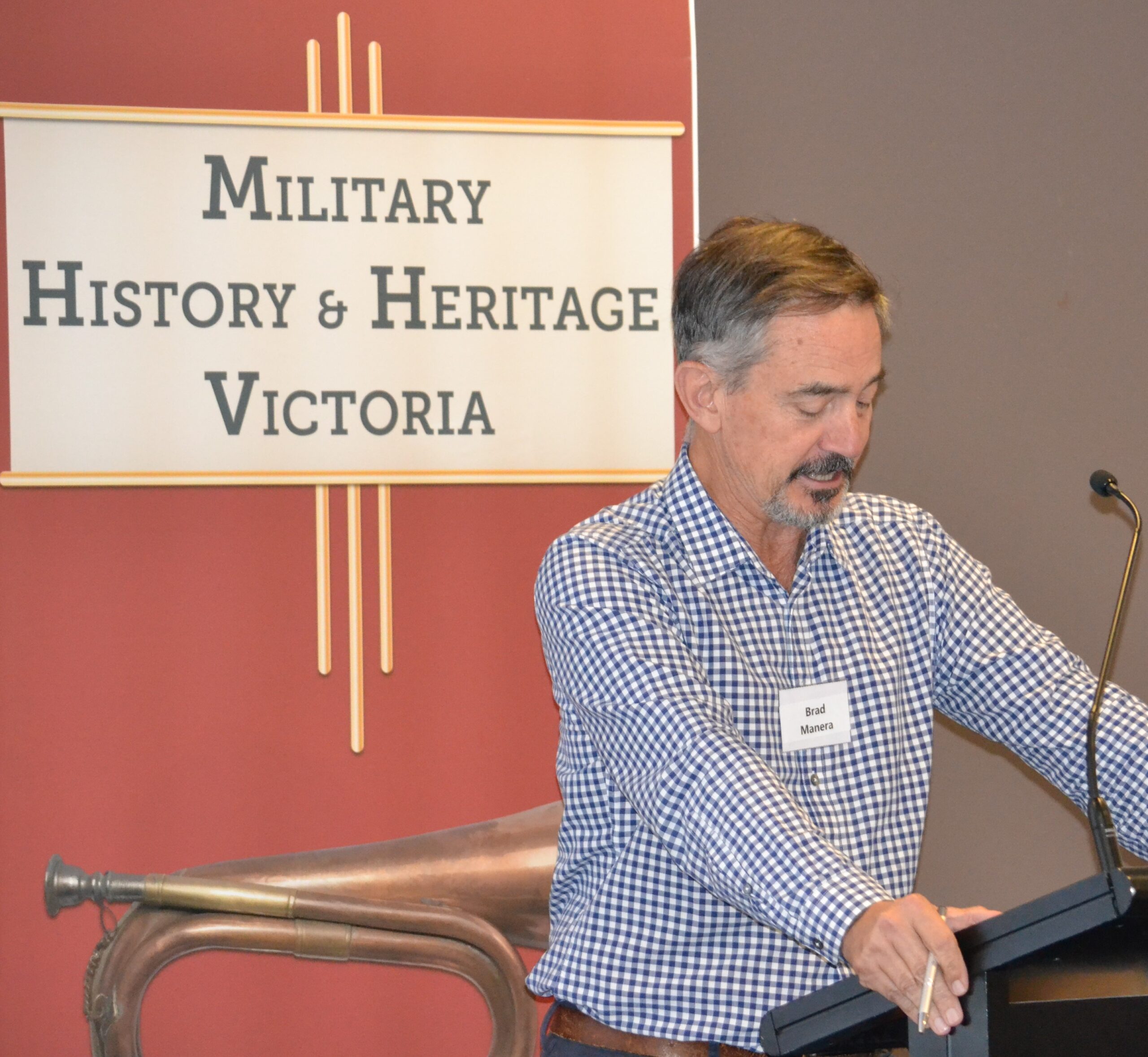
The story of submarine mines was continued by Mr Brad Manera presenting Dr Catie Gilchrist’s research of The Easter Submarine Mine Disaster, Sydney 1891. Submarine mines were considered a reliable and cheap way to protect the channels into Sydney Harbour. They generated so much interest that a demonstration of laying and detonating was set for the biggest event of the year, the Easter Military Encampment with 5,000 men under canvas. The public turned up in vast numbers. The officer in charge of the display decided to make a show of it and went to lay demonstration mines. In so doing he took with him thirteen others including a bugler. The first mine was lowered into place, the boat withdrew but failed to fire. It was pulled up but the wrong mine was connected to the detonator and blew the ship up. Lives were lost. The closing point made by the speaker was that the military also die in training for war.
In closing the patron Major-General Jim Barry made a point of thanking the session chairs, presenters, our technical operator Jason McGregor for making this such a successful conference.
Defenders of the Queen Imperial and Colonial Defence 1850-1901
CONFERENCE PROGRAM
Sunday 5 November 2023 (Waverley RSL, Glen Waverley)
8.30 – 9.00 am Conference Registrations
SESSION ONE | IMPERIAL CONNECTIONS
9.00 – 9.10 am Welcome
Opening of the Conference – Major-General Jim Barry AM MBE RFD ED (Rtd) MHHV Patron
Session Chair Introduction of Keynote Speaker – Professor Peter Edwards, AM, MHHV Vice-Patron
9:50 – 10.20 am Morning Tea
SESSION TWO | ADMIRALS AND REDCOATS
Session Chair: Captain Andrew MacKinnon CSC RAN (Rtd)
10.20 – 10.55 am
10.55 – 11.30 am
Paper: La Trobe’s Army – Major-General Mike O’Brien CSC MDA (Rtd), President RUSI (Vic)
11.30 – 12.00 pm
12.00 – 12.45 pm Lunch
SESSION THREE | SKIRMISHES & WARS
Session Chair: Lieutenant-Colonel Murray Duckworth, CSM
12:45 – 1:20 pm
1:25 – 2.00 pm
2.05 – 2.40 pm
2.45 – 3.15 pm Afternoon Tea
SESSION FOUR | FORTS and SUBMARINE MINING
Session Chair: Dr Daryl Moran, MHHV
3.15 – 3.50 pm
3.55 – 4.30 pm
4.30 – 4.40 pm
Closure of the Conference
Major-General Jim Barry AM MBE RFD ED (Rtd), MHHV Patron
Proudly supported by:
Contact Brent D Taylor about this article.

